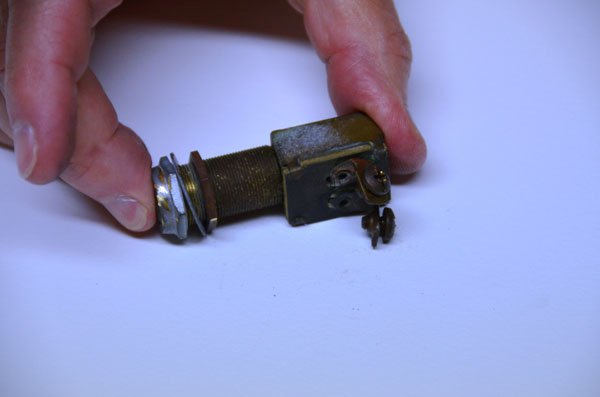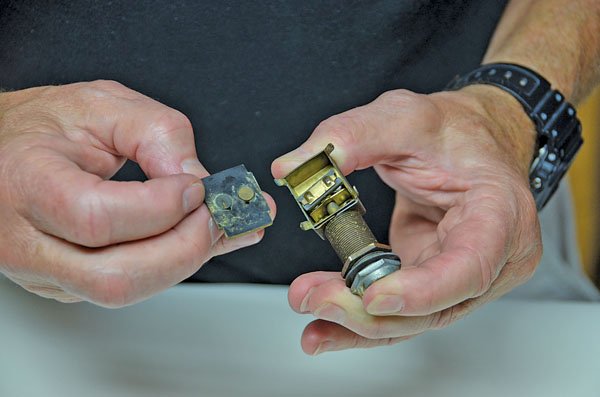Sunday, 21 August 2016
Wednesday, 17 August 2016
How to easily repair Momentary Switches used in boats
dvbot
05:53
Corroded Momentary switches, diy simple boat electrics, how to fix horn button, how to fix switches on boat, Momentary switches, simple boat switch fix
No comments
![]()
Momentary switches make generators and motors begin at the push of a catch. In any case, when they don't begin, consider the switch as opposed to the segment itself.
A momentary switch can come in various structures. You are presumably most acquainted with the little push button on your panel or board in charge. How about we take the button for horn for instance. You push it in and the horn blows. You take your finger off, it pops pull out, and the horn quits blowing. Assume the horn doesn't blow, or blows whimsically, when you push the button in. The issue might be eroded connections at the switch terminals or somewhere else. This is anything but difficult to fix so check connections at the switch, horn, and power sources, before going any further. On the off chance that you see erosion or different weaknesses, for example, a loose connection, settle that first. This might be as basic as fixing a screw or detaching the connection, cleaning it with a abrasive, including a squirt of moisture disbursing oil, and reassembling. In the event that you don't see an issue with the wiring and connection, suspect the switch.
Generally the contact points get to be hollowed or eroded to the degree that they pass either no current or current deficient to carry out the work well. The fix might be to just sand or file the contacts. You should disconnect the wiring and remove the switch from the panel board first and open the lodging at that end of the switch. This might be simple or not worth the exertion, depending upon the switch, but rather in a crisis circumstance you might be happy you know how to take care of the issue at least temporarily.
Another sort of issue is that the contact part moves or becomes dislodged from its assembly and in this way doesn't solidly seat against the rear of the wire terminals when you push the button. This is normally brought on by age and wear, and is from time to time worth fixing. (A well-made switch will regularly keep going quite a while before this happens.)
A third issue can happen if there is obstacle between the plunger and the shaft walls in which it moves. This could happen from issues, for example, a lot of oil or lubricant that has solidified from dirt, or from corrosion. Contingent upon the build of your switch, this might be simple or hard to get to, and clean utilizing light emery polishing paper or maybe only a rough clean rag. It can be an especially troubling issue in light of the fact that frequently the plunger gets stuck in the down position, implying that the horn won't turn off. This issue is far more awful if the momentary switch is being utilized to begin the engine. It is common for these switches to stick down in this application, making the starter solenoid stay activated, and therefore keeping on running the starter even after the motor has fired off. This can rapidly ruin an extremely costly starter and related parts and is a justifiable reason to replace these moderately cheap switches frequently.
 |
| If your horn won't blow, or blows erratically, it's probably the switch that is causing the problem |
A momentary switch can come in various structures. You are presumably most acquainted with the little push button on your panel or board in charge. How about we take the button for horn for instance. You push it in and the horn blows. You take your finger off, it pops pull out, and the horn quits blowing. Assume the horn doesn't blow, or blows whimsically, when you push the button in. The issue might be eroded connections at the switch terminals or somewhere else. This is anything but difficult to fix so check connections at the switch, horn, and power sources, before going any further. On the off chance that you see erosion or different weaknesses, for example, a loose connection, settle that first. This might be as basic as fixing a screw or detaching the connection, cleaning it with a abrasive, including a squirt of moisture disbursing oil, and reassembling. In the event that you don't see an issue with the wiring and connection, suspect the switch.
Finding the root of problem
The basics of a momentary switch are genuinely basic. The button is basically a plunger held in the out position inside its casing by a spring. At the flip side of the plunger (inside the switch lodging) is a contact surface. This is a metal channel joined to the plunger, or pushed by the plunger, with the goal that it contacts (jumps) and consequently connects the back ends of the two wire terminals. The circuit is completed and the horn blows. When you remove your finger, the spring pushes the plunger back out and the contact is broken.
 |
| Momentary switch from a horn - the wires attach to the terminals at the base. |
 |
| Carefully opening switch by bending back tabs. |
 |
| Removing terminal plate from switch box. |
You can usually determine quickly if the switch itself is the offender via deliberately hopping the wires, which are connected to the terminals behind the switch. Essentially remove one wire from its terminal and touch it to the next. This normally causes a spark, and sparks cause blasts and fire unless the territory where you are working is totally free of combustibles, including gasses. You can likewise get a little stun in case you're not cautious. A few mechanics utilize an improvised jumper wire, which is a short bit of well insulated wire with terminals at every end and a positive on/off switch in the center. You turn the wire switch off, interface the wire ends to the momentary switch terminals, turn the wire switch on, and this more securely jump the terminals. This wire and its on/off switch must be heavy duty enough to securely conduct the current involved. (On the off chance that you have any uncertainty, get a qualified professional to do this straightforward check.) If the horn blows when you jump the wires, your issue is likely in the switch.
You can likewise test the switch, in principle, by removing both wires and utilizing a volt-ohm meter to test for continuity by touching the probes to the switch terminals. There ought to be absolute continuity when you push the button. On the off chance that there is no continuity, or if it is intermittent, you have found the issue. Be that as it may, volt-ohm meters are at times hard to interpret unless you're acquainted with them. (Notice I utilize words, for example, "presumably" and "generally" a lot of times. This is on the grounds that, with boat work, even straightforward boat work, couple of things are certain and it's essential to dependably expect the unforeseen.)
In deep working of the switch
Given how basic momentary switches are, what can turn out badly?Generally the contact points get to be hollowed or eroded to the degree that they pass either no current or current deficient to carry out the work well. The fix might be to just sand or file the contacts. You should disconnect the wiring and remove the switch from the panel board first and open the lodging at that end of the switch. This might be simple or not worth the exertion, depending upon the switch, but rather in a crisis circumstance you might be happy you know how to take care of the issue at least temporarily.
 |
| With the terminal plate removed and the switch depressed, you can see the two humps on the jumper bar at the base of the switch, which make contact with the contact pads on the terminal plate to close the circuit. |
 |
| In this switch, the contact pads have become corroded and pitted, and the jumper bar is askew. |
 |
| After partial filing and cleaning, most of the corrosion on the contact pads has been removed, but the depression on the left-hand pad from arcing may interfere with a good contact. |
Another sort of issue is that the contact part moves or becomes dislodged from its assembly and in this way doesn't solidly seat against the rear of the wire terminals when you push the button. This is normally brought on by age and wear, and is from time to time worth fixing. (A well-made switch will regularly keep going quite a while before this happens.)
A third issue can happen if there is obstacle between the plunger and the shaft walls in which it moves. This could happen from issues, for example, a lot of oil or lubricant that has solidified from dirt, or from corrosion. Contingent upon the build of your switch, this might be simple or hard to get to, and clean utilizing light emery polishing paper or maybe only a rough clean rag. It can be an especially troubling issue in light of the fact that frequently the plunger gets stuck in the down position, implying that the horn won't turn off. This issue is far more awful if the momentary switch is being utilized to begin the engine. It is common for these switches to stick down in this application, making the starter solenoid stay activated, and therefore keeping on running the starter even after the motor has fired off. This can rapidly ruin an extremely costly starter and related parts and is a justifiable reason to replace these moderately cheap switches frequently.










